Paintings from the upcoming exhibition, In the Shadow of Tomorrow: Neo-realism in the Netherlands, at the MMKA (November 18 2012 through February 17 2013)
![]() Edgar Fernhout (1912–74), Schedel (Skull),1935
I found this exhibit when searching for work by Edgar Fernhout at the suggestion of Antonia Flowerville. Fernhout is the grandson of Jan Toorop (and son of Charley Toorop, also a painter).
I plan to research all of these artists. Stay tuned.
Edgar Fernhout (1912–74), Schedel (Skull),1935
I found this exhibit when searching for work by Edgar Fernhout at the suggestion of Antonia Flowerville. Fernhout is the grandson of Jan Toorop (and son of Charley Toorop, also a painter).
I plan to research all of these artists. Stay tuned.
![]() Raoul Hynckes (1893–1973) , Ex-est, 1940
Raoul Hynckes (1893–1973) , Ex-est, 1940
![]() Raoul Hynckes (1893–1973) , De ijzeren hand (The iron hand), 1935
Raoul Hynckes (1893–1973) , De ijzeren hand (The iron hand), 1935
![]() Johan Mekkink (1904–91), Stilleven met houtduif (Still-life with wood pigeon), 1943/44–1947
Johan Mekkink (1904–91), Stilleven met houtduif (Still-life with wood pigeon), 1943/44–1947
![]() Johan Mekkink (1904–91), Zelfportret in spiegel (Self-portrait in mirror), 1940
Johan Mekkink (1904–91), Zelfportret in spiegel (Self-portrait in mirror), 1940
![]() Pyke Koch (1901–91), Nocturne, 1930
Pyke Koch (1901–91), Nocturne, 1930
![]() Pyke Koch (1901–91) , Mercedes de Barcelona, 1930
Pyke Koch (1901–91) , Mercedes de Barcelona, 1930
![]() Dick Ket (1902–40), Stilleven met druiventros (Still-life with grapes), 1934
Dick Ket (1902–40), Stilleven met druiventros (Still-life with grapes), 1934
![]() Dick Ket (1902–40), Stilleven met Piëta, (Still-life with Piëta), 1932
Dick Ket (1902–40), Stilleven met Piëta, (Still-life with Piëta), 1932
![]() Carel Willink, Zelfportret met schede (Self-portrait with skull), 1936
Carel Willink, Zelfportret met schede (Self-portrait with skull), 1936
![]() Carel Willink, Stadsgezicht (City-view), 1934
Carel Willink, Stadsgezicht (City-view), 1934
![]() Carel Willink, Landschap met omvergeworpen beeld (Landscape with overthrown statue), 1942
Exhibit press release:In November of this year, the exhibition In the shadow of tomorrow. Neorealism in the Netherlands will open at the MMKA. The exhibition is a reprise of the influential exhibition The fearful thirties (De bange jaren dertig) which was featured in 1960 at the Arnhem Municipal Museum (Gemeentemuseum Arnhem), now the MMKA. What made this exhibition unique was that the zeitgeist of the 1930s was used as a starting point for presenting a controversial movement of that time: neorealism. The idea was that this group of painters in the 1930s consciously or unconsciously displayed on canvas the threat of a new world war.
Since its beginnings in 1920, the MMKA has put together an important collection of works by neorealists. Over time, this collection has been carefully expanded with works by painters from the inter-bellum — the period between the world wars — including Dick Ket, Carel Willink, Pyke Koch, Raoul Hynckes, Johan Mekkink, Wim Schuhmacher and Edgar Fernhout. There were significant differences between these artists, but it was clear that they shared common features in their style at this time: figurative painting and fine brushstrokes. Due to the 1960 exhibition and the publication that accompanied it, written by curator Jan van der Mark, the above-mentioned artists are now part of the canon of Dutch neorealists.
Disappointment
Unfortunately, not all of the intended art works could be shown in 1960. Wim Schuhmacher did not participate since he refused to have his work displayed with that of Pyke Koch (who had sympathized with Nazi Germany), Edgar Fernhout was no longer interested in his early work, and Raoul Hynckes wanted to display recent paintings alongside older work.
Two reasons
There are two reasons for presenting a new version of the exhibition in 2012. One has to do with the museum itself. The MMKA was the first museum in the Netherlands to recognize, name, and collect work representing the neorealist movement at a time when other museums demonstrated a preference for Cobra and American abstract expressionism. In addition, it is now possible to display all the works that were originally selected. The second motivation for a reprise is the similarity between the zeitgeist of the 1930s and that of today, with its global crises and accompanying fears.
Historical document
Curator Ype Koopmans states the following about In the shadow of tomorrow, 2012 : ‘Work by Dutch neorealists has now become well-known and loved by a large public, but the movement hasn’t been represented in a context where so many works could be seen together in one place since the 1960s. For this reason, In the shadow of tomorrow is a unique historical document and an exhibition that art aficionados have to see.’
Carel Willink, Landschap met omvergeworpen beeld (Landscape with overthrown statue), 1942
Exhibit press release:In November of this year, the exhibition In the shadow of tomorrow. Neorealism in the Netherlands will open at the MMKA. The exhibition is a reprise of the influential exhibition The fearful thirties (De bange jaren dertig) which was featured in 1960 at the Arnhem Municipal Museum (Gemeentemuseum Arnhem), now the MMKA. What made this exhibition unique was that the zeitgeist of the 1930s was used as a starting point for presenting a controversial movement of that time: neorealism. The idea was that this group of painters in the 1930s consciously or unconsciously displayed on canvas the threat of a new world war.
Since its beginnings in 1920, the MMKA has put together an important collection of works by neorealists. Over time, this collection has been carefully expanded with works by painters from the inter-bellum — the period between the world wars — including Dick Ket, Carel Willink, Pyke Koch, Raoul Hynckes, Johan Mekkink, Wim Schuhmacher and Edgar Fernhout. There were significant differences between these artists, but it was clear that they shared common features in their style at this time: figurative painting and fine brushstrokes. Due to the 1960 exhibition and the publication that accompanied it, written by curator Jan van der Mark, the above-mentioned artists are now part of the canon of Dutch neorealists.
Disappointment
Unfortunately, not all of the intended art works could be shown in 1960. Wim Schuhmacher did not participate since he refused to have his work displayed with that of Pyke Koch (who had sympathized with Nazi Germany), Edgar Fernhout was no longer interested in his early work, and Raoul Hynckes wanted to display recent paintings alongside older work.
Two reasons
There are two reasons for presenting a new version of the exhibition in 2012. One has to do with the museum itself. The MMKA was the first museum in the Netherlands to recognize, name, and collect work representing the neorealist movement at a time when other museums demonstrated a preference for Cobra and American abstract expressionism. In addition, it is now possible to display all the works that were originally selected. The second motivation for a reprise is the similarity between the zeitgeist of the 1930s and that of today, with its global crises and accompanying fears.
Historical document
Curator Ype Koopmans states the following about In the shadow of tomorrow, 2012 : ‘Work by Dutch neorealists has now become well-known and loved by a large public, but the movement hasn’t been represented in a context where so many works could be seen together in one place since the 1960s. For this reason, In the shadow of tomorrow is a unique historical document and an exhibition that art aficionados have to see.’
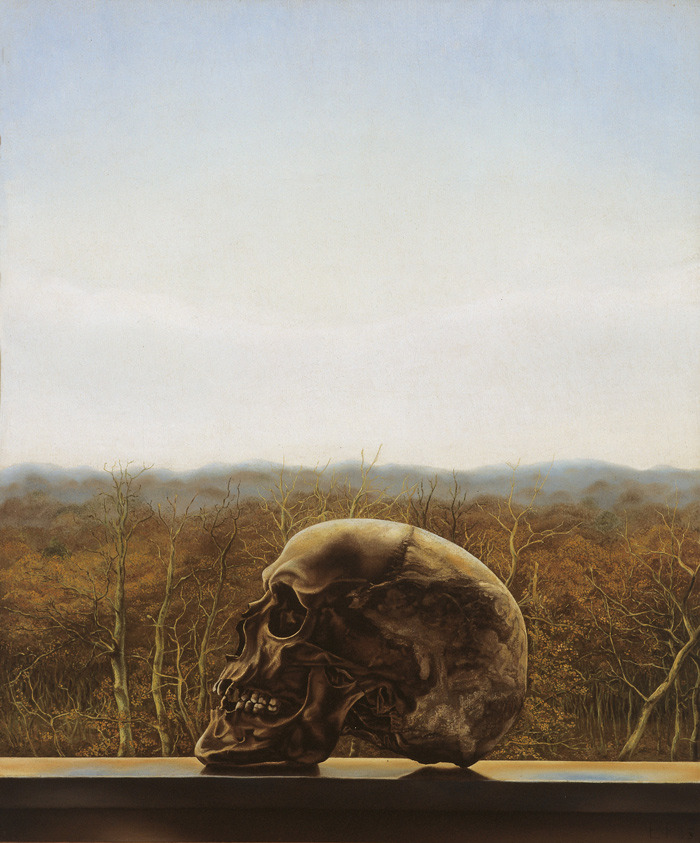 Edgar Fernhout (1912–74), Schedel (Skull),1935
I found this exhibit when searching for work by Edgar Fernhout at the suggestion of Antonia Flowerville. Fernhout is the grandson of Jan Toorop (and son of Charley Toorop, also a painter).
I plan to research all of these artists. Stay tuned.
Edgar Fernhout (1912–74), Schedel (Skull),1935
I found this exhibit when searching for work by Edgar Fernhout at the suggestion of Antonia Flowerville. Fernhout is the grandson of Jan Toorop (and son of Charley Toorop, also a painter).
I plan to research all of these artists. Stay tuned.
 Raoul Hynckes (1893–1973) , Ex-est, 1940
Raoul Hynckes (1893–1973) , Ex-est, 1940
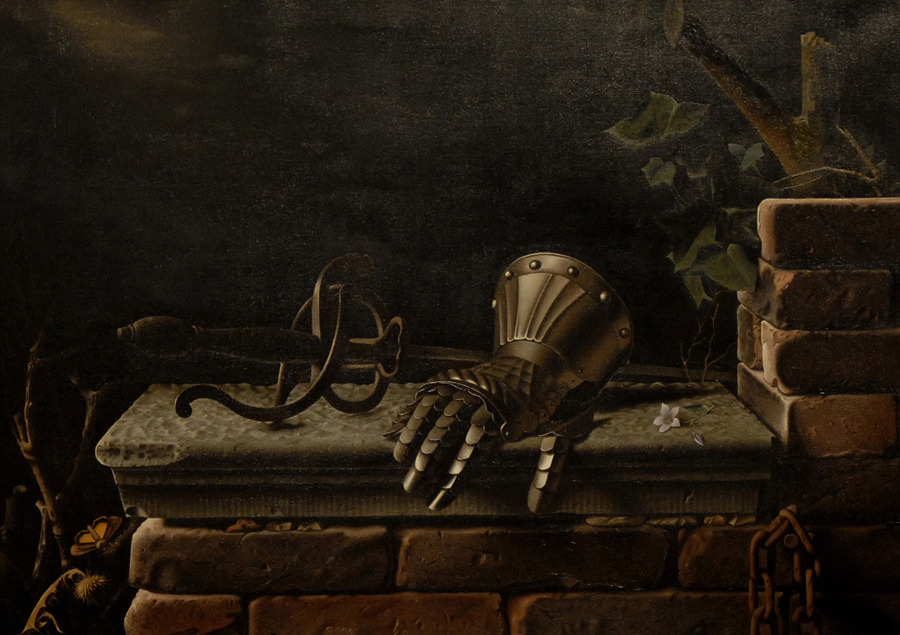 Raoul Hynckes (1893–1973) , De ijzeren hand (The iron hand), 1935
Raoul Hynckes (1893–1973) , De ijzeren hand (The iron hand), 1935
 Johan Mekkink (1904–91), Stilleven met houtduif (Still-life with wood pigeon), 1943/44–1947
Johan Mekkink (1904–91), Stilleven met houtduif (Still-life with wood pigeon), 1943/44–1947
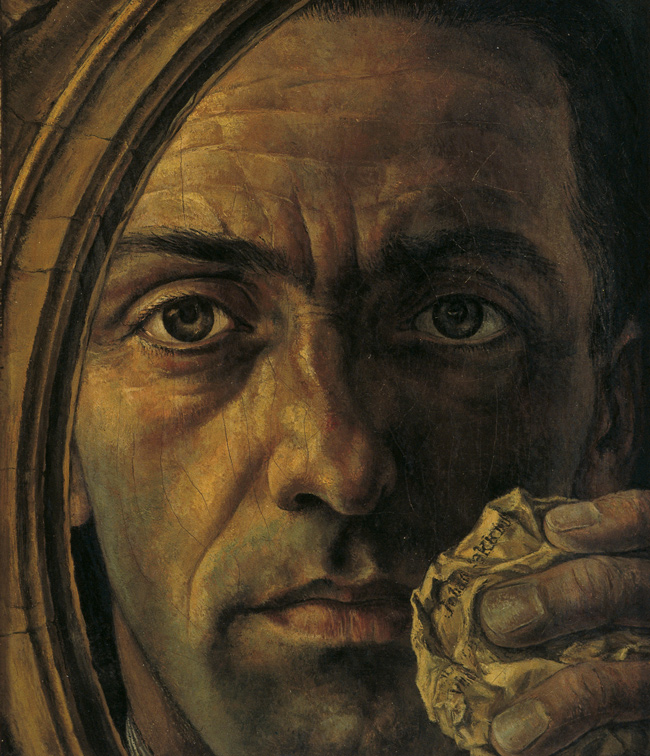 Johan Mekkink (1904–91), Zelfportret in spiegel (Self-portrait in mirror), 1940
Johan Mekkink (1904–91), Zelfportret in spiegel (Self-portrait in mirror), 1940
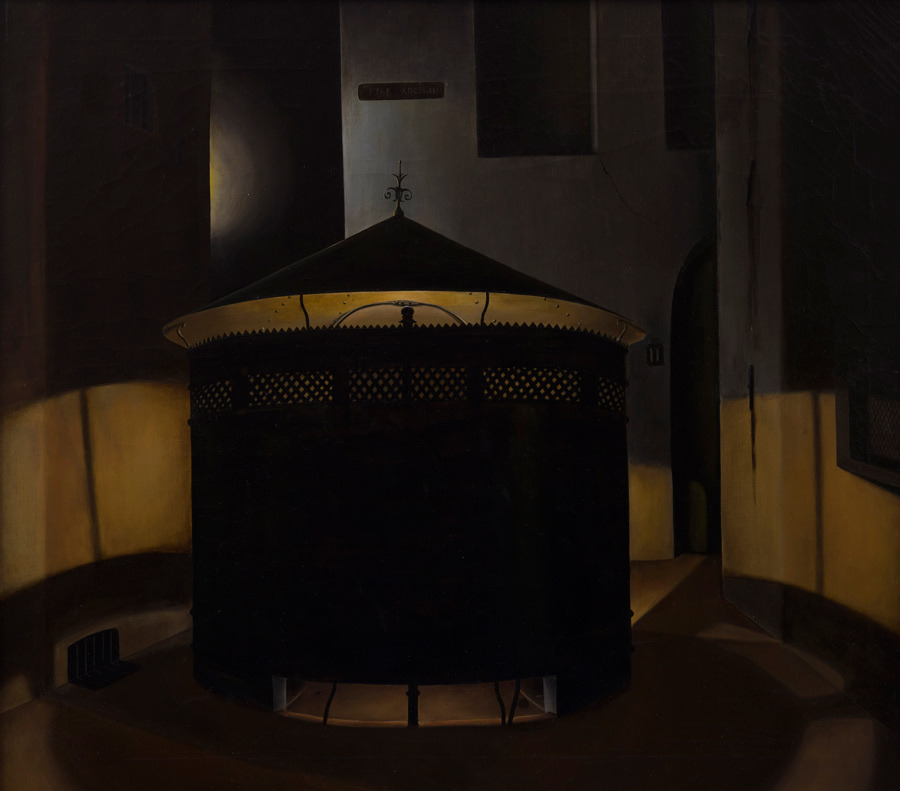 Pyke Koch (1901–91), Nocturne, 1930
Pyke Koch (1901–91), Nocturne, 1930
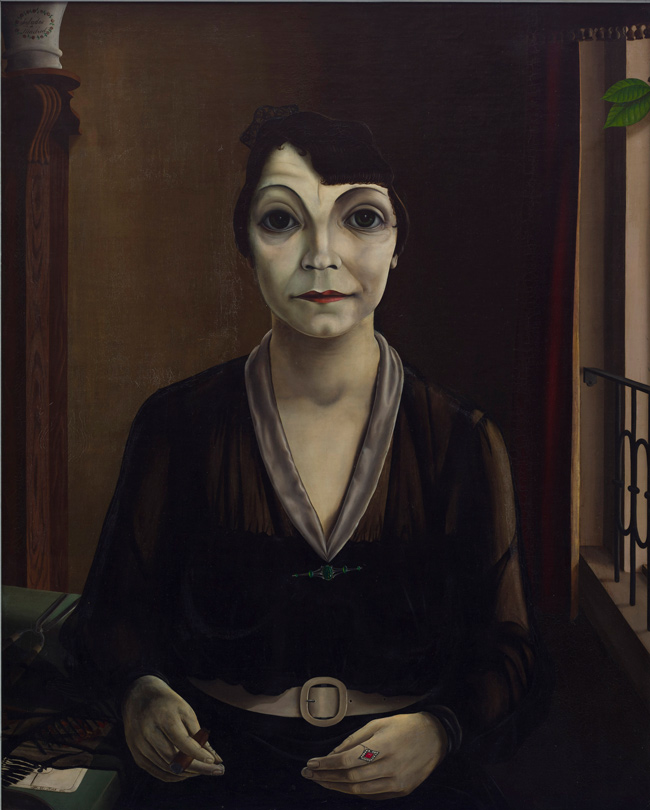 Pyke Koch (1901–91) , Mercedes de Barcelona, 1930
Pyke Koch (1901–91) , Mercedes de Barcelona, 1930
 Dick Ket (1902–40), Stilleven met druiventros (Still-life with grapes), 1934
Dick Ket (1902–40), Stilleven met druiventros (Still-life with grapes), 1934
 Dick Ket (1902–40), Stilleven met Piëta, (Still-life with Piëta), 1932
Dick Ket (1902–40), Stilleven met Piëta, (Still-life with Piëta), 1932
 Carel Willink, Zelfportret met schede (Self-portrait with skull), 1936
Carel Willink, Zelfportret met schede (Self-portrait with skull), 1936
 Carel Willink, Stadsgezicht (City-view), 1934
Carel Willink, Stadsgezicht (City-view), 1934
 Carel Willink, Landschap met omvergeworpen beeld (Landscape with overthrown statue), 1942
Exhibit press release:In November of this year, the exhibition In the shadow of tomorrow. Neorealism in the Netherlands will open at the MMKA. The exhibition is a reprise of the influential exhibition The fearful thirties (De bange jaren dertig) which was featured in 1960 at the Arnhem Municipal Museum (Gemeentemuseum Arnhem), now the MMKA. What made this exhibition unique was that the zeitgeist of the 1930s was used as a starting point for presenting a controversial movement of that time: neorealism. The idea was that this group of painters in the 1930s consciously or unconsciously displayed on canvas the threat of a new world war.
Since its beginnings in 1920, the MMKA has put together an important collection of works by neorealists. Over time, this collection has been carefully expanded with works by painters from the inter-bellum — the period between the world wars — including Dick Ket, Carel Willink, Pyke Koch, Raoul Hynckes, Johan Mekkink, Wim Schuhmacher and Edgar Fernhout. There were significant differences between these artists, but it was clear that they shared common features in their style at this time: figurative painting and fine brushstrokes. Due to the 1960 exhibition and the publication that accompanied it, written by curator Jan van der Mark, the above-mentioned artists are now part of the canon of Dutch neorealists.
Disappointment
Unfortunately, not all of the intended art works could be shown in 1960. Wim Schuhmacher did not participate since he refused to have his work displayed with that of Pyke Koch (who had sympathized with Nazi Germany), Edgar Fernhout was no longer interested in his early work, and Raoul Hynckes wanted to display recent paintings alongside older work.
Two reasons
There are two reasons for presenting a new version of the exhibition in 2012. One has to do with the museum itself. The MMKA was the first museum in the Netherlands to recognize, name, and collect work representing the neorealist movement at a time when other museums demonstrated a preference for Cobra and American abstract expressionism. In addition, it is now possible to display all the works that were originally selected. The second motivation for a reprise is the similarity between the zeitgeist of the 1930s and that of today, with its global crises and accompanying fears.
Historical document
Curator Ype Koopmans states the following about In the shadow of tomorrow, 2012 : ‘Work by Dutch neorealists has now become well-known and loved by a large public, but the movement hasn’t been represented in a context where so many works could be seen together in one place since the 1960s. For this reason, In the shadow of tomorrow is a unique historical document and an exhibition that art aficionados have to see.’
Carel Willink, Landschap met omvergeworpen beeld (Landscape with overthrown statue), 1942
Exhibit press release:In November of this year, the exhibition In the shadow of tomorrow. Neorealism in the Netherlands will open at the MMKA. The exhibition is a reprise of the influential exhibition The fearful thirties (De bange jaren dertig) which was featured in 1960 at the Arnhem Municipal Museum (Gemeentemuseum Arnhem), now the MMKA. What made this exhibition unique was that the zeitgeist of the 1930s was used as a starting point for presenting a controversial movement of that time: neorealism. The idea was that this group of painters in the 1930s consciously or unconsciously displayed on canvas the threat of a new world war.
Since its beginnings in 1920, the MMKA has put together an important collection of works by neorealists. Over time, this collection has been carefully expanded with works by painters from the inter-bellum — the period between the world wars — including Dick Ket, Carel Willink, Pyke Koch, Raoul Hynckes, Johan Mekkink, Wim Schuhmacher and Edgar Fernhout. There were significant differences between these artists, but it was clear that they shared common features in their style at this time: figurative painting and fine brushstrokes. Due to the 1960 exhibition and the publication that accompanied it, written by curator Jan van der Mark, the above-mentioned artists are now part of the canon of Dutch neorealists.
Disappointment
Unfortunately, not all of the intended art works could be shown in 1960. Wim Schuhmacher did not participate since he refused to have his work displayed with that of Pyke Koch (who had sympathized with Nazi Germany), Edgar Fernhout was no longer interested in his early work, and Raoul Hynckes wanted to display recent paintings alongside older work.
Two reasons
There are two reasons for presenting a new version of the exhibition in 2012. One has to do with the museum itself. The MMKA was the first museum in the Netherlands to recognize, name, and collect work representing the neorealist movement at a time when other museums demonstrated a preference for Cobra and American abstract expressionism. In addition, it is now possible to display all the works that were originally selected. The second motivation for a reprise is the similarity between the zeitgeist of the 1930s and that of today, with its global crises and accompanying fears.
Historical document
Curator Ype Koopmans states the following about In the shadow of tomorrow, 2012 : ‘Work by Dutch neorealists has now become well-known and loved by a large public, but the movement hasn’t been represented in a context where so many works could be seen together in one place since the 1960s. For this reason, In the shadow of tomorrow is a unique historical document and an exhibition that art aficionados have to see.’